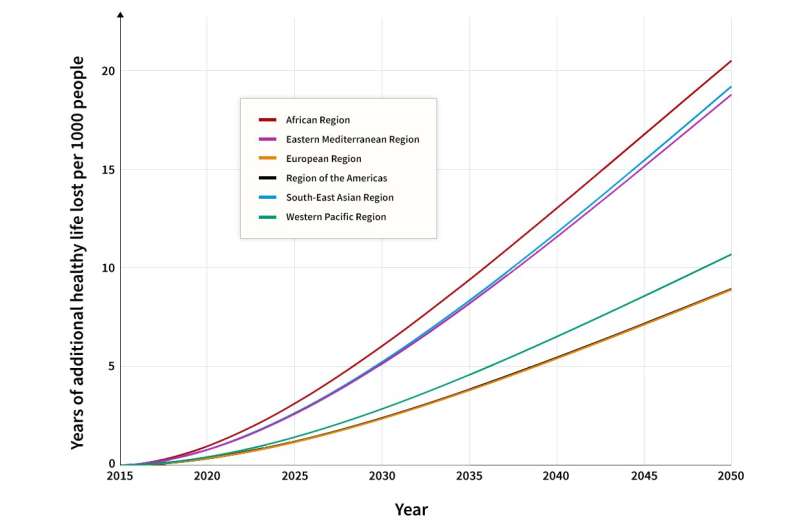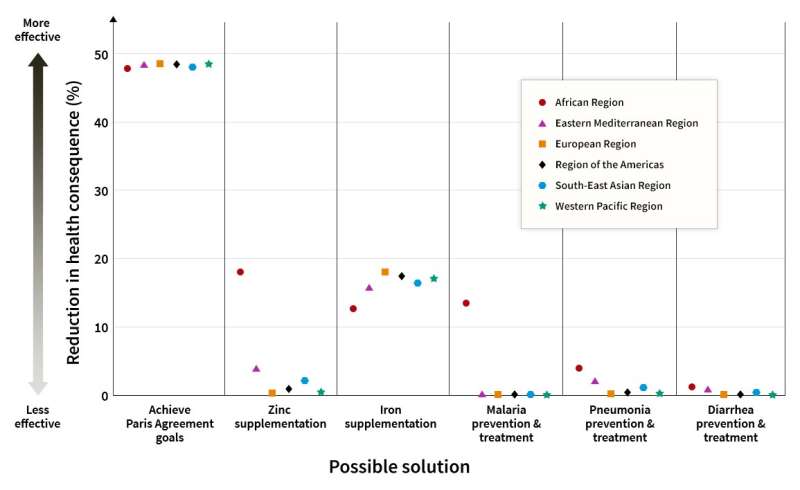Researchers explore the effects of climate change on hunger

As the climate changes, where plants grow best is predicted to shift. Crops that once thrived as a staple in one region may no longer be plentiful enough to feed a community that formerly depended on it. Beyond where plants grow, there's also the issue of how they grow. Evidence suggests that plants grown in the presence of high carbon dioxide levels aren't as nutritious.
For example, experiments have shown that higher levels of carbon dioxide in the air result in lower zinc and iron levels in wheat, rice, barley and related crops. This matters because zinc and iron deficiencies are associated with many health problems.
"Zinc is critical for the immune system and zinc deficiency makes pneumonia, diarrheal illness, malaria more difficult for the body to combat," said Eran Bendavid, associate professor of medicine. "Iron deficiency has all sorts of manifestations, from lethargy and feeling ill to broader effects, like worse performance in school."
David Lobell, professor of Earth system science in the School of Earth, Energy & Environmental Sciences, has been studying the relationship between climate change and crops. He was drawn to the relationship between C02 and crop nutrition because his work pairs findings from scientific models with concrete observations.
"Any time you're looking at data, you need observations that correspond to the conditions you're trying to understand. But you have to be creative to find data sets that allow for this kind of validation," Lobell said.

Last year, Lobell, Bendavid and Stanford collaborators including management science and engineering graduate student Christopher Weyant, published a paper in which they projected how crop nutrition – zinc and iron levels – will respond to climate change in the coming decades and what that might mean for human health. They looked at two different scenarios, one a base case scenario in which carbon dioxide levels climb relatively unabetted, resulting in a nearly 40 percent increase in carbon dioxide concentrations by 2050. In the other, the group assumed global temperatures would remain within 2 degrees Celsius of pre-industrial levels, as proposed by the Paris Agreement.
For each scenario, they calculated how many years of healthy life people around the world would lose due to illness, disability or death as a result of less iron and zinc in their diet. In the base case scenario, they also explored how different health care interventions, including zinc or iron supplementation, and disease control programs for pneumonia, diarrhea and malaria could help.
They projected that, by far, the most effective way to reduce the consequences of this carbon dioxide-induced disease burden was to limit the amount of carbon dioxide in the atmosphere. In their model, sticking to Paris Agreement goals avoided 48.2 percent of the healthy years lost to carbon dioxide-induced nutritional diseases. In contrast, providing health care interventions only reduced years of healthy life lost by 26.6 percent.
As with other research on the impact of climate change, these nutritional deficiencies are more likely to affect the poorest people first and most severely. But Lobell cautions against assuming it is a problem happening somewhere else.
"Even in a world that is getting more and more food secure, malnutrition would be among the biggest – if not the biggest – health effects of climate change," Lobell said.
Lobell is now studying what large and small farms are currently doing to combat climate change and the effectiveness of those efforts. One aspect of this work is his lab's analysis of high-resolution images from satellites to estimate crop yields from space.
Provided by Stanford University





















